On the Genesis GV80, Acura MDX, BMW iDrive and more
From Genesis to Lamborghini, from Bosch to Acura: new automotive developments.
#Acura #electronics
This is the fourth issue of on Automotive. It would be nice to put in something clever about the number four—like to reference a 2+2 car or 4WD—but we won’t. We will ask, again, for you to get people you know who might be interested in seeing this to get a subscription by hitting this word and then filling out a quick form. Thanks. Gary S. Vasilash
This week On Automotive
- Strong & Safe: What’s Not to Like About the GV80?
- He Also Designed the Current London New Routemaster Bus
- 2022 Acura MDX SH-AWD A-Spec
- BMW Has a New iDrive
- Bosch Puts AI in the Factory
- A Tool You’ll Never Use for a Car You’ll Never Drive
- New Vehicles in Europe
///
Strong & Safe: What’s Not to Like?
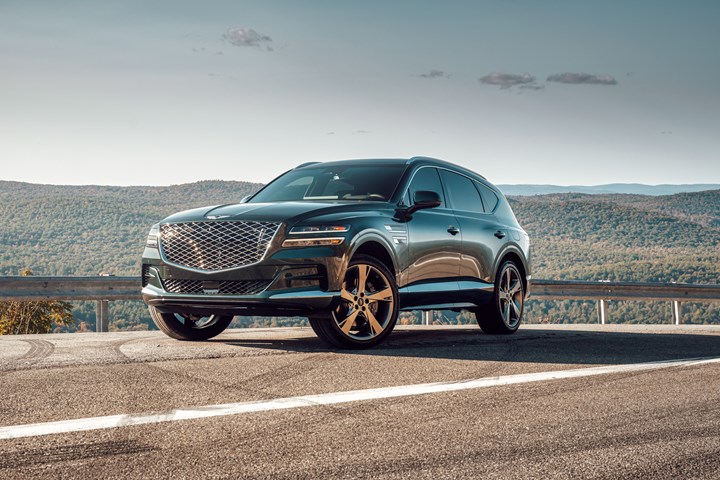
The GV80 combines a steel structure with clever tech. (Image: Genesis)
“When you’re given a big challenge, the best thing to do is start from a clean sheet of paper.” That’s Albert Biermann, president, Head of Research & Development Division, Hyundai Motor Group.
The challenge in question was the development of the GV80, midsize SUV. An all-new vehicle riding on a new platform.
The vehicle is built to be solid. There are hot stampings used for the A- and B-pillars, floor cross members and rocker panels. The roof cross members, transmission tunnel, front chassis extensions, and rear structure components are made with ultra-high-strength steel. And the cowl, floor panels, rear wheel housings are all high-strength steel.
(A shout out to the nonferrous community: the doors, hood and hatch are aluminum.)
Strong. And Smart. Then there’s safety tech. The GV80 uses machine learning. The system monitors the driver’s behavior—acceleration, steering, distance maintained behind other vehicles—and when the Smart Cruise Control or Highway Driving Assist are engaged, that learning is used to adjust vehicle performance parameters.
And there is a suite of other ADAS tech.
The Safety Package. Brian Latouf, Chief Safety Officer of Genesis Motor North America. “The GV80 body structure was engineered with energy absorbing front and rear crumple zones and high strength structural load paths to maintain occupant compartment integrity during severe crash impacts. The GV80 structural safety design protects occupants with the seatbelt systems, pre-tensioners and 10 airbags including a new front seat center airbag that deploys between the driver and front seat passenger.”
The GV80 received a TOP SAFETY PICK+ rating from the Insurance Institute for Highway Safety (IIHS).
It is the vehicle that Tiger Woods was driving when he had his recent accident. If you saw pictures of that, you have a sense of the structural integrity of the GV80.
///
He Also Designed the Current London New Routemaster Bus
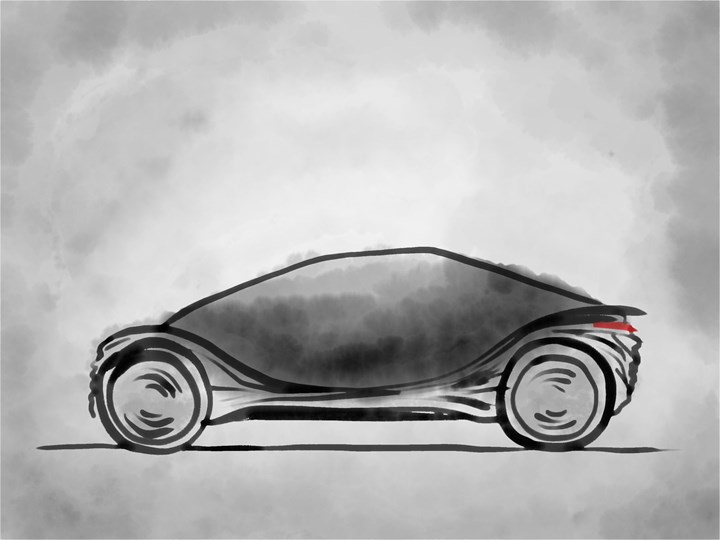
This is an EV design sketch from a world-famous designer. And that is not exaggeration. (Image: Heatherwick Studio)
Objects of. . .Interest. You may be familiar with the object known as the “Vessel” in Hudson Yards in New York, the 16-story structure of stairways and passages. Or maybe you recall the Cauldon at the 2012 Summer Olympic Games in London, the carrier of the Olympic flame during the game. Or the double-deck London New Routemaster bus which was well known for its interior thermal properites. They were designed by the studio of British designer Thomas Heatherwick.
Heatherwick Studio has been engaged by IM Motors—a company established by SAIC Motor, Zhangjiang Hi-Tech Group and Alibaba Group—to design an electric vehicle and charging station for the company.
That sketch above is what the design firm has released.
The car (and charger, presumably) are to be introduced at the Shanghai Motor Show next month.
///
2022 Acura MDX SH-AWD A-Spec
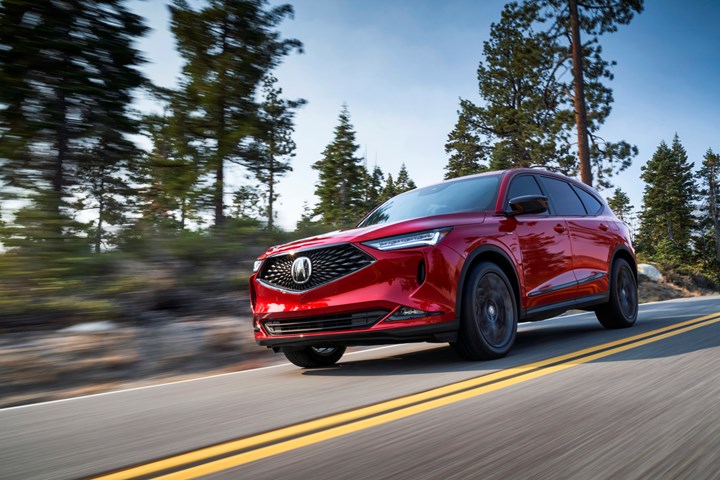
Fourth-generation Acura MDX. (Image: Acura)
The Big One. The Acura MDX has always been the biggest vehicle in the brand’s lineup since the first generation appeared in 2001. (It ran until 2006. Gen Two is 2007-13. Gen Three from 2014-20.)
With the fourth generation of the three-row SUV the MDX, which is on an all-new platform, is even bigger:
- Wheelbase: 113.8 inches (+2.8 in.)
- Length: 198.4 inches (+2.2 in.)
- Width: 78.7 inches (+1.0 in.)
- Height: 67.1 inches (+0.6 in.)
And while that may not be particularly meaningful, know this:
The passenger volume and the maximum cargo volume are both bigger:
- EPA passenger volume: 139.1 cubic feet (+6.4 cu. ft.)
- Max cargo volume behind 1st row: 95 cubic feet (+4.1 cu. ft)
All-American. It was styled at the Acura Design Studio in Torrance, California. It was engineered at a development center in Raymond, Ohio. It is assembled in East Liberty, Ohio. The V6 is built at the engine plant in Anna, Ohio. The 10-speed automatic transmission hails from the plant in Tallapoosa, Georgia.
Seems like it checks all the design-engineer-produce-in-U.S.A. boxes.
Power Player. Acura is working to position its vehicles as being performance models, even things like the MDX, which is definitionally a vehicle meant to carry passengers and their gear.
One approach is through design: the ’22 MDX has an increased (+4.3 inches) dash-to-axle ratio. This means there is a longer hood and a cab-back setup. This is meant to draw attention to the hood and to imply that there is something notable under it.
Which Is. . . A 3.5-liter direct-injected i-VTEC V6 engine rated at 290 peak hp and 267 lb.-ft. peak torque. Which is mated to the aforementioned 10-speed. The last-gen MDX has a 9-speed. The last-gen has the same V6, but in the current deployment, there are modifications, such as a new air intake system, new multi-hole fuel injectors and new tuning.
You can tell.
What is surprising about the MDX is how, especially when just getting on the throttle, how. . .lively it is. After all, this is—as established—a large, three row vehicle and yet it feels like something far more lithe.
Structurally Speaking. The ’22 MDX is based on a new light-truck platform. In this execution, compared to the last gen there is a 32% increase in torsional rigidity.
Among the things done to improve rigidity are the use of a cast aluminum housing to which the damper is connected, a rigid-mounted subframe, and a dual-balanced load path for the rear damper mounting points.
And there is the use of 35 meters of structural adhesives.
There is a double-wishbone front suspension (a first for an MDX) and an all-new multilink rear.
Rear Is Real. On the inside, the leather that appears to be leather is leather. The aluminum, aluminum. The wood. . . .
Then There’s Digital. The gauge cluster is digital. This is Acura’s first all-digital approach. In the center of the IP there’s a horizontally oriented 12.3-inch screen.
Amazon Alexa is built in for purposes of interface control. (E.g., navigation, music selection.)
There is also the “True Touchpad Interface.” With all due respect to the developers of this system, the less I say about it the better.
I am glad there is a volume knob. A tuner would have been useful.
Real Is Real, 2. Elliot Scheiner is a real person. I’ve met him. Talked at length with him about music because he is one of the foremost music engineers. He’s worked with Steely Dan, Fleetwood Mac, The Eagles, Eric Clapton. . . . Yes, all that and more.
The MDX has ELS STUDIO audio. The A-Spec system features 16 speakers, 710 watts and 16 channels. Scheiner tuned the system.
The leather is leather, the aluminum is aluminum, the wood is wood, and the sound is spectacular.
ICYMI: Check out our interview with Tom Nguyen, chief engineer, 2022 MDX Global Development Leader, Honda R&D Americas, on “Autoline After Hours.”
///
BMW Has a New iDrive

BMW is providing plenty of screen space in the forthcoming iX and i4 vehicles. (Image: BMW)
In 2001, Y2K didn’t happen. The BMW iDrive system did.
It was deployed in the then-new BMW 7 Series.
There was a color screen in the IP. And a knurled dial on the center console.
Early on, having to go through multiple screens to make simple adjustments was. . .trying.
But to be fair, realize that back then you were using a Nokia cell phone.
And the Y2K reference may be a bit harsh.
Talk, Talk. BMW will be launching iDrive 8 in its forthcoming iX and i4 vehicles.
As for interface, the dial largely gives way to dialogue, as commands are given to the “BMW Intelligent Personal Assistant.” Among the things it controls are climate control, ambient lighting, audio playback, opening and closing of the side windows, shading of the panoramic glass roof, and more.
There is an iDrive Controller in the center console for those so inclined, albeit one in which the metal has given way to glass.
Shapely Screens. Yes, the instrument cluster is a 12.3-inch display. Then there is a 14.9-inch control display. The two are designed so that they form the “BMW Curved Display,” curved so that they are driver-oriented.
In addition to which there is a head-up display, as well.
Mainly Minimal. BMW is emphasizing a minimalist design approach, as well as one that provides only the information necessary under the prevailing driving conditions.
And according to the company, compared to what you’ll find in the latest BMW circa right now, the number of buttons and switches in the iDrive 8 vehicles will be about half as many.
The BMW Curved Display interface for iDrive 8. (Image: BMW)
///
Bosch Puts AI in the Factory

Bosch is installing AI in its factories. Here, setting it up for optical defect detection. (Image: Bosch)
Although hole drilling in a powertrain plant and artificial intelligence seem to be two disparate things, not so at Bosch, which is investing some 500 million euros in its plants for digitalization, connectivity. . .and AI.
Which will mean things like self-adapting processes: if that drill deviates, adjustments will be made as necessary.
The system Bosch is using for manufacturing processes was developed at the Bosch Center for Artificial Intelligence. It is being initially rolled out to 50 powertrain plants worldwide and connected to more than 800 production lines.
Use Case. The AI software is used with the Bosch Connected Industry’s Nexeed Manufacturing Execution System (MES), which collects, processes and analyzes data from cameras, controllers, sensors, etc. The AI system can take that input and then recommend what a Bosch associate can do.
Or it can make an independent adjustment.
What They Say. Dr. Michael Bolle, Bosch chief data officer and chief technology officer: “The use of artificial intelligence will make factories more efficient, more productive, more eco-friendly – and will make products even better. Our new AI solution will save plants millions in costs.”
About the 500 Million Euros. Bosch anticipates a savings of about one billion euros by 2025 as a result of the investment.
///
A Tool You’ll Never Use for a Car You’ll Never Drive
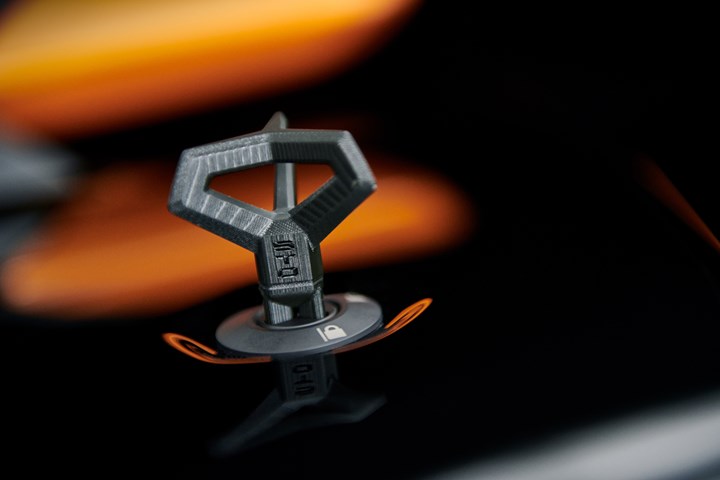
A 3D printed tool to open the Lambo Cofango. (Image: Lamborghini)
The Lamborghini Huracán STO* is a street-legal version of vehicles like the Huracán EVO Super Trofeo and the Huracán EVO GT3.
What Street Is That? The Huracán STO has a 640-hp V10. The car goes from 0 to 62 mph in 3.0 seconds and has a top speed of 193 mph.
It starts at $328,000.
Clever Design. The car features what Automobili Lamborghini personnel call the “Cofango.”
That’s a word that combines two Italian words, cofano, or hood, and parafango, or fender.
The Huracán STO, which has a carbon fiber body, has a single piece hood, front fenders and front bumper. They form the Confango.
The Tool. So what kind of tool would you need to open the super car Confango? One that Lamborghini R&D developed: a 3D printed opening device.
For many of us, just having that would be very cool.
*In case you’re wondering: Super Trofeo Omologata
///
New Vehicles in Europe
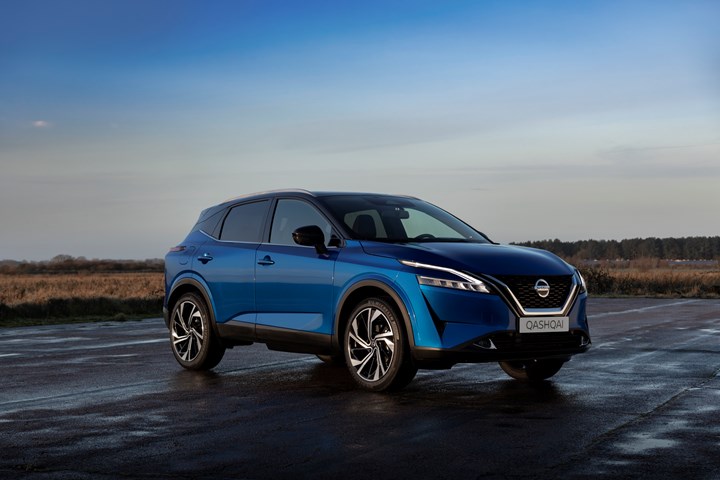
All-new, third-generation Nissan Qashqai. (Image: Nissan)
There will be 26 new models produced in Europe this year according to French analyst firm Inovev. These range (alphabetically) from the Alfa-Romeo Tonale (a crossover) to the Volvo C40 (an electric crossover).
And looked at from the point of view of volumes, it ranges from the Mercedes EQS (production plant: Sindelfingen) at 3,259 to the Nissan Qashqai (production plant: Sunderland) at 183,158.
Of the vehicles to be launched, eight are battery electric. That’s about 30%.
Forecast: Inovev reckons that 1,565,000 of these vehicles will be manufactured this year and 1,745,000 next year, or about 10% of total European production.
RELATED CONTENT
-
on lots of electric trucks. . .Grand Highlander. . .atomically analyzing additive. . .geometric designs. . .Dodge Hornet. . .
EVs slowdown. . .Ram’s latest in electricity. . .the Grand Highlander is. . .additive at the atomic level. . .advanced—and retro—designs. . .the Dodge Hornet. . .Rimac in reverse. . .
-
On The Toyota Corolla Cross, Hyundai Santa Cruz, and VW Subscriptions
How to charge an autonomous vehicle. Toyota adds a new crossover. VW gets into the subscription business. Hyundai goes Santa Cruz. And more.
-
On Zeekr, the Price of EVs, and Lighting Design
About Zeekr, failure, the price of EVs, lighting design, and the exceedingly attractive Karma


.jpg;width=70;height=70;mode=crop)






